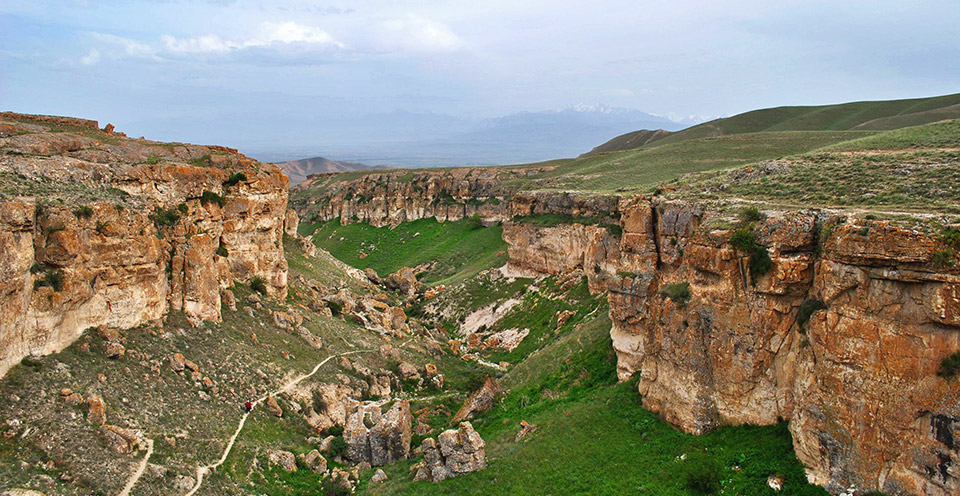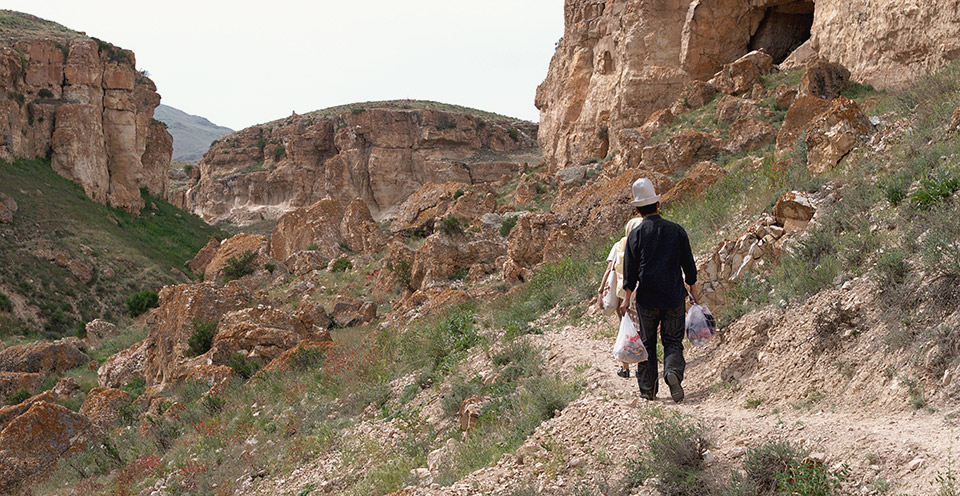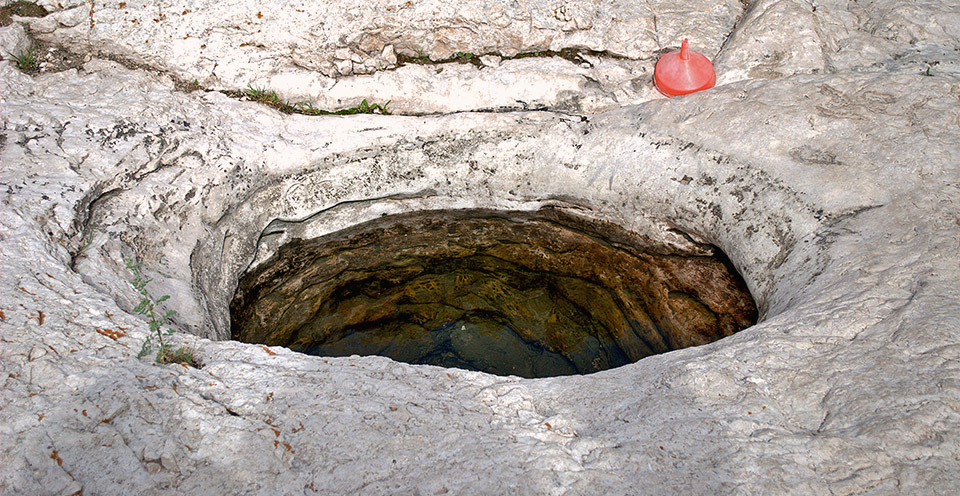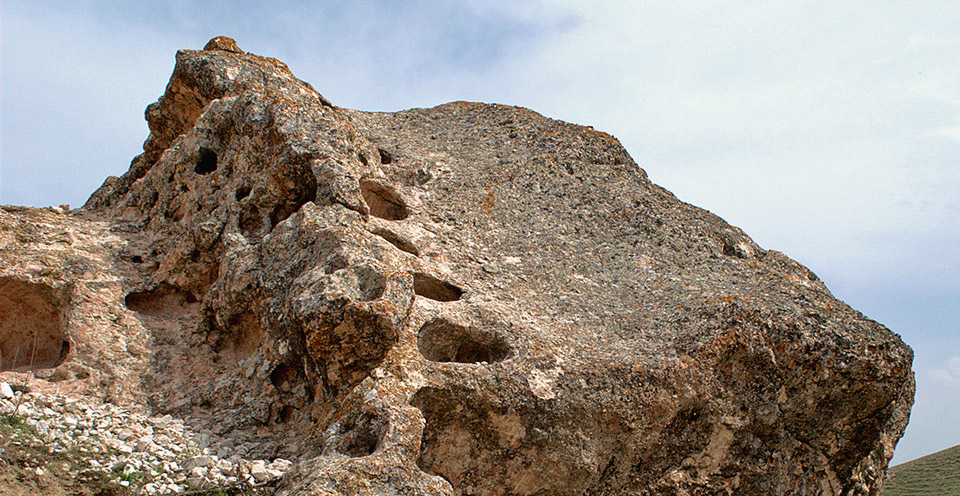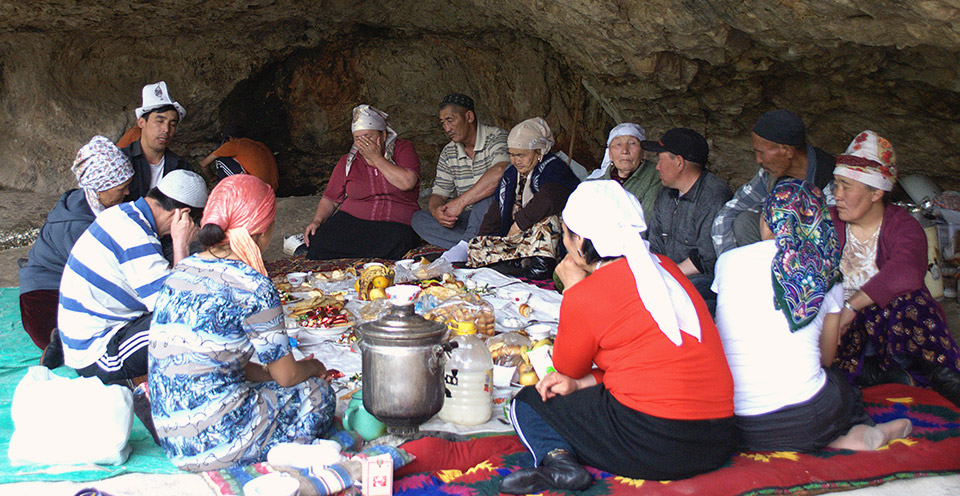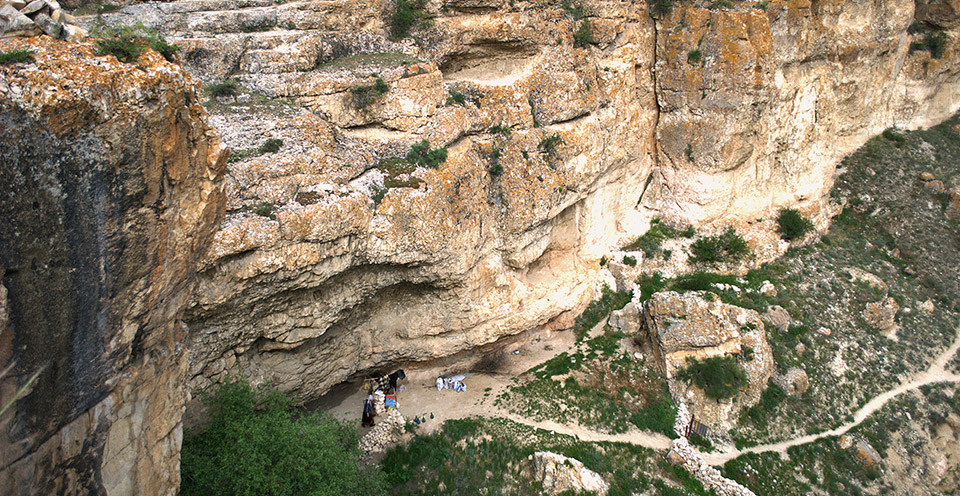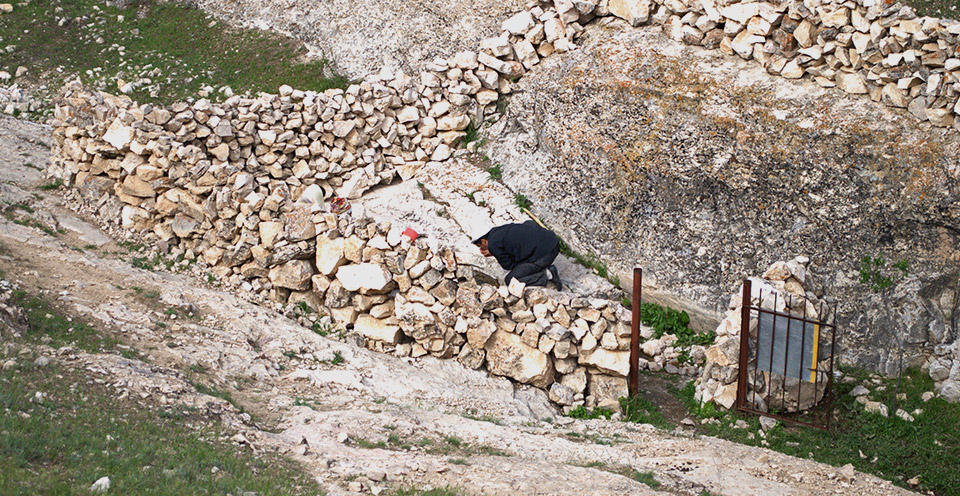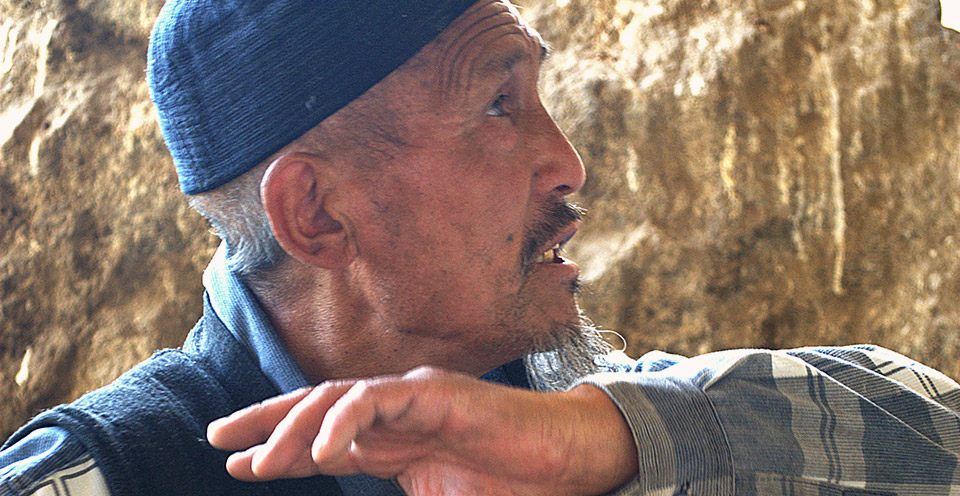Nyldy-Ata is situated in the rocky area in the Echkilüü Mountain gorge of Ozgorush village, isifundazwe Talas, eNorth of Kyrgyzstan. The entire gorge is connected to a complex of sacred sites. The water emerges from a cone-shape hollow (diameter ~ 1 m) in the western side of a big flat stone. Water streams through a waterfall (~ 40 m) going eastwards where it ultimately leaves the valley. Below the waterfall, on the northern side of the gorge, there is a cave in the mountain with sacred water dripping from the wall. Custodians call the site a court. Kukhona ehlezi amacansi kanye Cookware kanye ebasa ezintathu efanelekayo cauldrons enkulu pilgrims abawuhloniphayo. This is the sacred site Ordo – the center of the Nyldy Ata. The Nyldy Ata complex encompasses 22 amasayithi engcwele. They are all located in the Echkilüü Mountains at the foothills of Chong-Tuyuk and Kichi-Tuyuk.
Ngenxa yokusongelwa.
The water level and the emerging springs in the well are decreasing, perhaps because of climate change. The gorge is large and unfenced, so shepherds herd animals, defiling the brooks. The spiritual sphere and indigenous culture are under serious pressure from various businesses, as well as from various religions. According to the Islam for example, worshipping sacred sites is a sin. Islam practitioners prohibit visits to sacred sites and have been trying to destroy such sites.
Vision
abantu Kyrgyz ukubheka ngokwabo ngobunye yonke nesimo ezungeze. Sky, izitshalo kanye namanzi amabhlogo wokwakha bemvelo. Ukuze odokotela bendabuko akunakwenzeka ukubona umuntu ohlukile nemvelo. Uma ixhunywe nemvelo umuntu kungenziwa waphulukiswa ke. Kunemibono eyahlukene mayelana nokusetshenziswa isayithi engcwele sika ukuphulukisa ezingaba. Ngokusho kweminye izivakashi "kuyasiza lapho uza isayithi nentando inkolelo yakho". Uma kukhona buhlobene eduze umuntu nendawo, ke ngokuvamile imiphumela emihle. Ngakho, nabantu abanomuzwa wokuthi uxhumano futhi balithole imibono evamile yokuthi angazivikela kanjani isayithi engcwele. imibono nokhiye ekuqwashiseni umphakathi, ukuthola ukuqashelwa ngokomthetho ukugcina endaweni ehlanzekile futhi engenazo ezingondlekile.
Action
In 2004, the Aigine Cultural Research Center started researching the ancient tradition of pilgrimage to sacred sites with financial support of The Christensen Fund. Within two and a half years, the coalition had established several results. They had defined the location of 258 sacred sites in Talas oblast of Kyrgyzstan, interviewed hundreds of sacred site palmers, witnessed rituals and investigated biological diversity at numerous sacred sites.
Policy and Law
Enye yezinto ezisemqoka of Aigine kutfutfukisa Noma kunalokhu kuvikeleka kwezomthetho kumasayithi engcwele. Ngokwe-ochwepheshe nabathwali zolwazi lwendabuko, nezindaba central kuyizinto imithetho elawula ukuziphatha in the sites engcwele Kyrgyzstan, kanye nokubhekelelwa ukubaluleka kwamasiko futhi emvelweni. Kusukela ekuqaleni, Aigine iye efuna ukuba kubunjwe iqembu olinganiselayo omelele bonke abaphathiswa ekuthuthukiseni le mithetho. Iningi amasayithi engcwele kuleli zwe bahlukile ngobuhle bayo nangezithelo zayo ekuhlanzekeni imvelo. Kunamathuba amahle kakhulu ukuze ujike esishintshashintshayo ezinjalo kumasayithi lokuphumula ethandwa nezokuvakasha okungokomoya.
Jenish Kudakeev is one of the approximately 150 guardians with whom Aigine Cultural Research Center is collaborating in Talas oblast. He belongs to the group of the guardians categorized as Shai’yks. Shai’yks are people who look after a sacred site, guide pilgrims and lead the ritual performances. Njengomthetho, Shai’yks know the history and the special features of a sacred site. Shai’yks have the ability to practice traditional healing. Jenish Kudakeev has a particular characteristic: he is an ordinary person outside of the gorge, but when inside the gorge he is believed to possess certain extraordinary skills like the ability to heal people and to help them solve life problems and gain unique information for them.
Coalition
Aigine Cultural Research Center, okuholela ukongiwa nokuthuthukiswa Nyldy-Ata umhosha, uyasebenzisana izinhlangano zamazwe ngamazwe ubuchwepheshe nentshisakalo ukwehluka kwamasiko nokuxhumama yemvelo, inkolo, ingokomoya, temdzabu nemfundo, kodwa futhi abafundi kusuka Talas State University kanye ne abagcina wendawo.
amathuluzi Conservation
In 2006, the Aigine Cultural Research Center fenced several sacred sites at Nyldy-Ata complex and hung signs at the entrance with rules for appropriate behavior. The center published a Kyrgyz book called “Blessed Nyldy-Ata” which includes descriptions, history of the site and stories and experiences of visitors. In 2008, the center built a restroom at Nyldy-Ata gorge. Aigine Cultural Research Center has invited Jenish Kudakeev to various workshops, seminars and conferences about sacred site conservation. At present, he and other local people guide the visitors and explain the rules for pilgrimage at the site.
Imiphumela
The main outcome after two years of participatory research is the book Mazar Worship in Kyrgyzstan: Rituals and Practitioners in Talas. Through the work that Aigine Cultural Research Center has done to preserve, promote and conserve the Nyldy-Ata sacred sites complex, more people know about the sites and visit them in order to find solutions for their spiritual questions. Ngale ndlela, the history of the sites is transmitted to the next generations.
- Aitpeva G. (ed) 2009. Sacred sites of Issyk-Kul: spiritual powers, pilgrimage, and art. Aigine. Bishkek.
- Cholponai U. 2012 In Search of Sacredness: Pilgrimage Practices in Kyrgyzstan. In: Verschuuren, B., Wild., R., (Eds). Sacred Amasayithi Natural, Imithombo Diversity Biocultural, Langscape volume 2, issue 11. kk 68 - 71, Available from: https://sacrednaturalsites.org/items/terralingua-langscape-volume-2-issue-11/
- Webster J (2012) IREX, Pilgrimage and Shrines in Kyrgyzstan and Tajikistan. IREX, Washington. http://www.irex.net/sites/default/files/Webster_J%20Scholar%20Research%20Brief%202011-2012_0.pdf
- www.aigine.kg
- www.traditionalknowledge.org
- www.christensenfund.org

